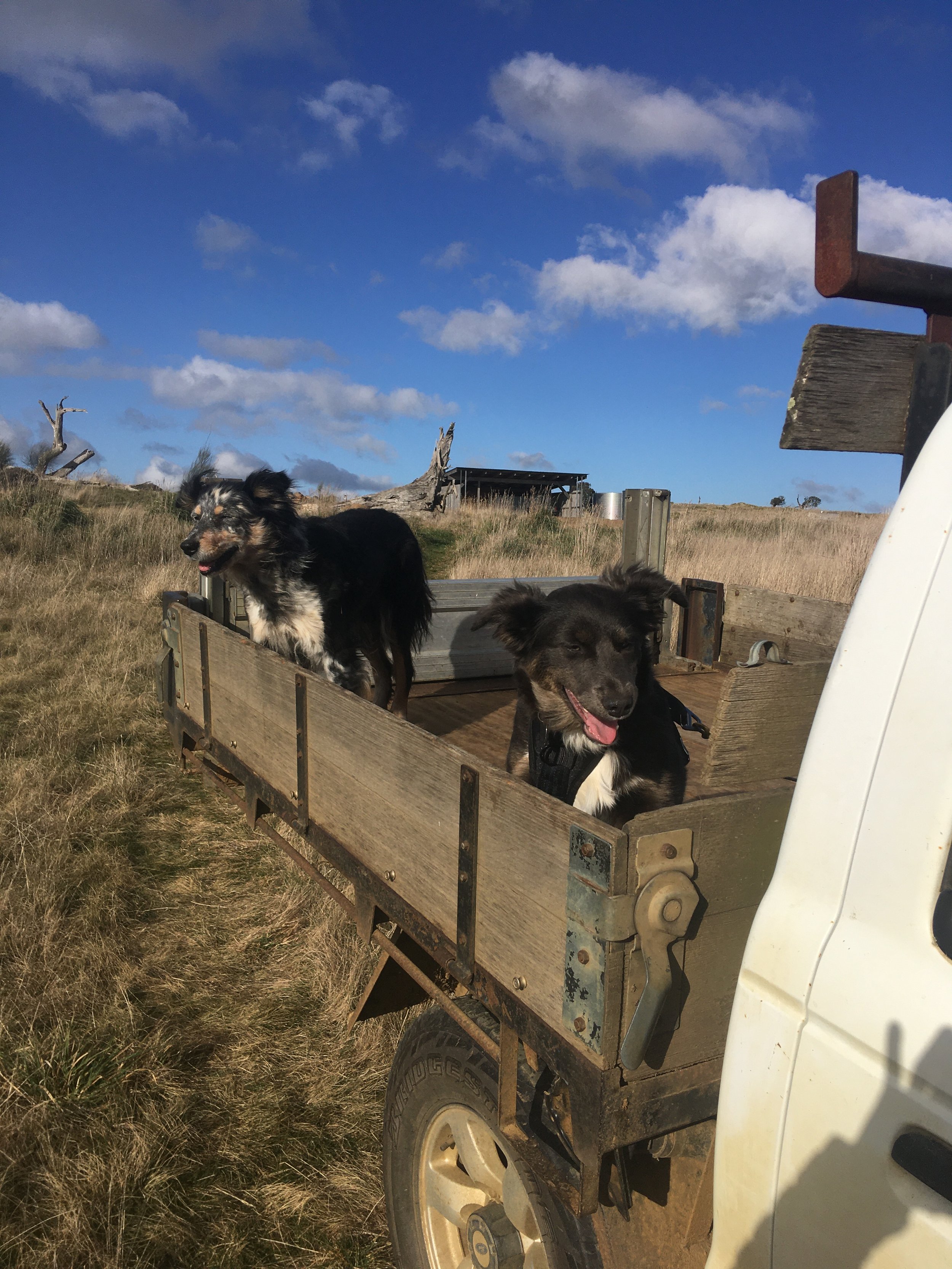Lessons from a sheep-pup
There must be nearly as many ideas about how to start a working dog as there are people trying to train them. Working livestock with a dog is a complex, frustrating, amazing interaction between three species, where almost anything can happen, and usually does.
There is an astronomical level of uncertainty about the outcome when you ask a young dog to figure out what she is supposed to do with sheep before she even really understands her relationship with you.
Fly and Pearl on our way to the first working session.
My sheepdog training bible, a lovely book by Scotsman John Templeton, makes it sound simple and straightforward. Make sure the puppy has learned the basics—sit, lie down, recall—before you allow her to start working sheep. Then start her with a few well-behaved sheep in a small yard, so that you can catch and correct her if things get out of hand.
Unfortunately, that good basic training tends to disappear when the pup sees sheep moving, and generally all hell breaks loose.
Fly looking bright-eyed and ready for anything!
I’m convinced that all of the dog’s cognitive capability is consumed by processing the visual stimulus of moving sheep, which, after all, is what she was born to do. However, no brain space is left for listening to me, so my well-trained Dr Jekyll pup transforms instantly into Mr Hyde. Worst case scenario is sheep scattered to the four winds along with those training commands.
Fly being well-behaved and attentive to my voice at home—without distractions!
So it was with a certain amount of disbelief that I watched my new pup, Fly, approach my flock of 500 sheep with respect and determination on her first try. She didn’t run in and bust them up. She didn’t single one of them off and chase it to Timbuctoo. She didn’t run around after Pearl, my older dog who was holding the flock together, and who is Fly’s idol. She just walked in, moved sheep, flanked around and moved them again.
And most miraculous of all, she came back to me when I called.
So what’s going on?
I have certainly spent more time on the basics with Fly than I did with any of my other dogs over the years. But I’m coming around to the idea that the main difference is starting her on a big mob of canny sheep who have run together as a flock for years (my oldest sheep are 13, and I run all of my sheep together so they have become a cohesive family, a bit like the Hatfields or McCoys). In short, they are less like a ‘normal’ commercial flock, and more like a herd of wild herbivores, who have a similar family-based social structure and a cohesive response to predators.
I’m basing this idea on the way wild dogs and wolves work as a pack. The slightly oversimplified description of wild pack hunting technique is that the fastest members of the pack outrun the front of the prey herd, gradually turning them back toward the rest of the pack. The herd stays together, protecting the vulnerable youngsters and older animals by keeping them in the middle, and facing off the predators on the edges. It’s anything but a slam-dunk for wild dogs or wolves to get even a single animal down. (For an example, see the BBC Planet Earth’s video of African wild dogs viewed from the air while hunting impala.)
Now, imagine the scene when the wolf pups get invited to their first hunt—imagine all the ways they could screw up. But I’m betting they don’t. I’m betting they stay back with the main pack (me, in this case) and don’t interfere with the heading wolves. They would be watching both the prey and the grown-ups for cues as to how to behave. And that’s pretty much exactly what Fly was doing.
I think the way I was taught to train—on a small group of sheep in a confined area—short-circuits an instinct I didn’t even know is there: don’t screw up the hunt. Eventually, I do want her to go around to the head of the flock (on command), but I’m ok staying with this driving instinct for now, and seeing what else Fly has to teach me over the next few months.



